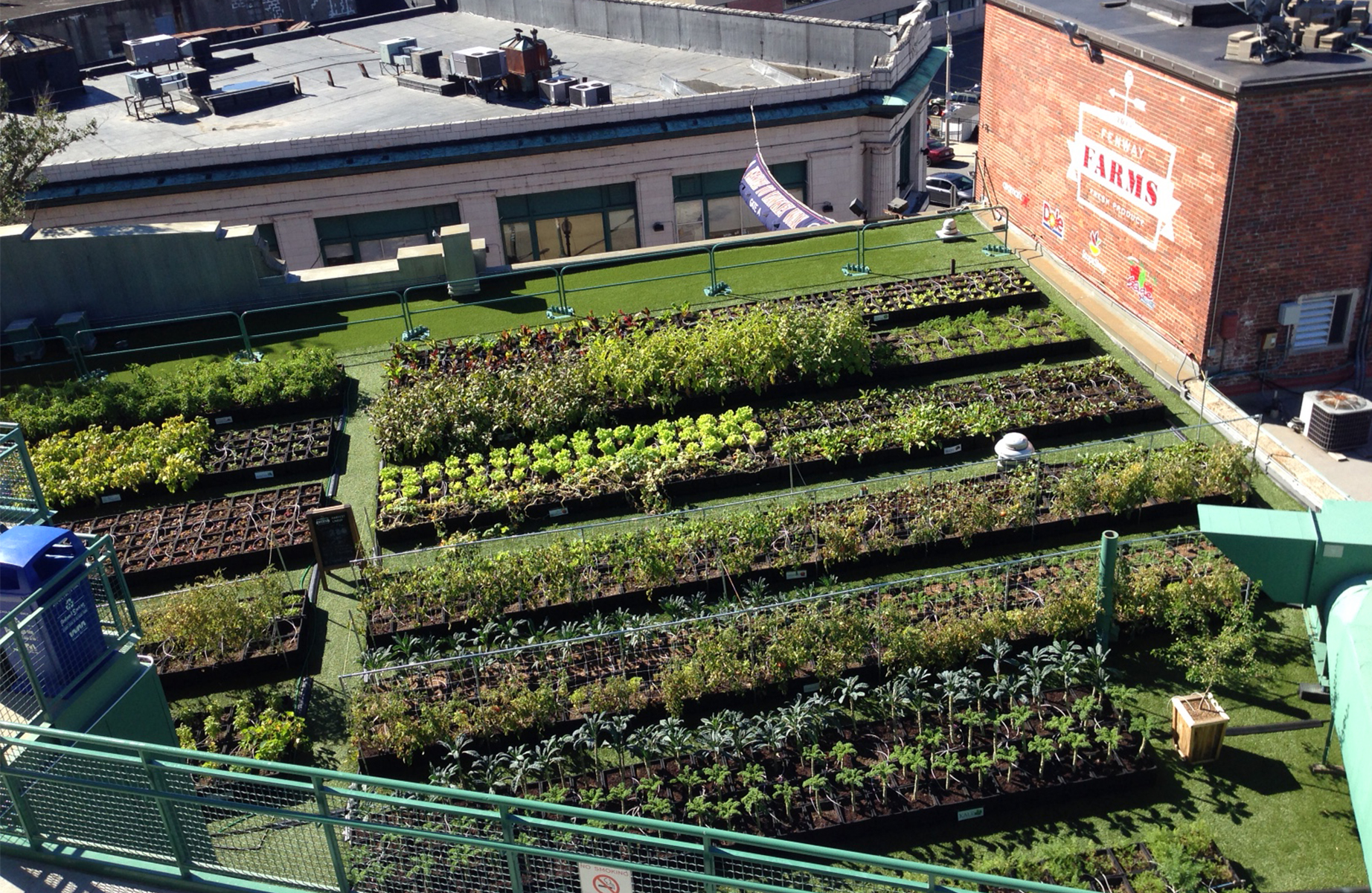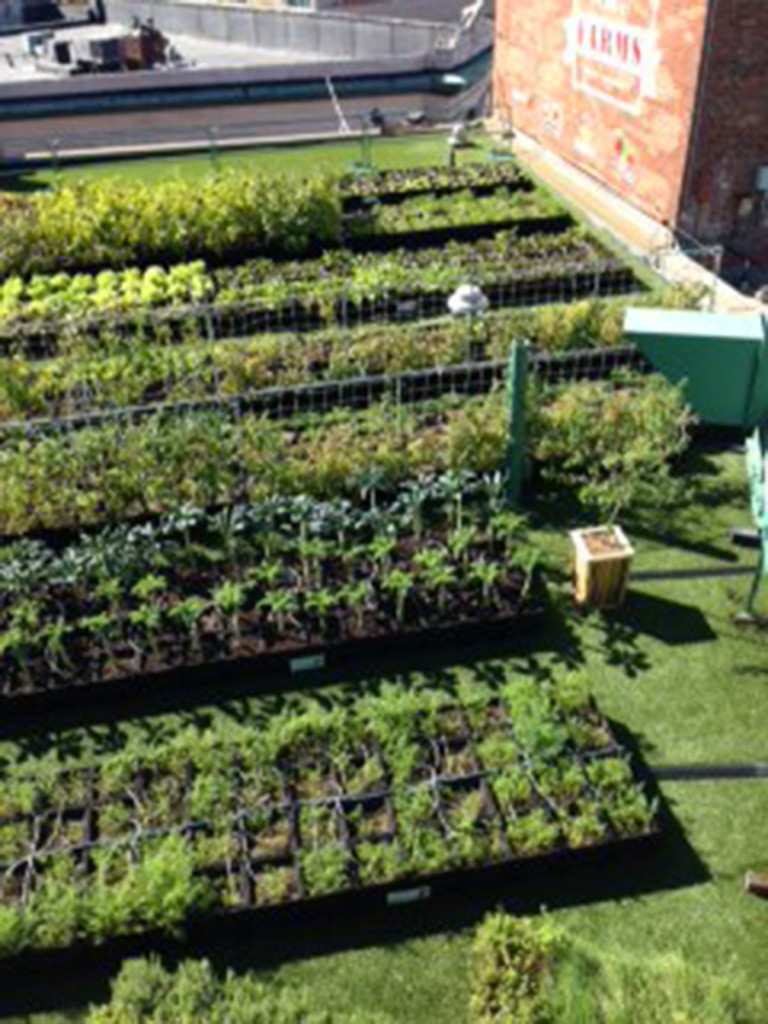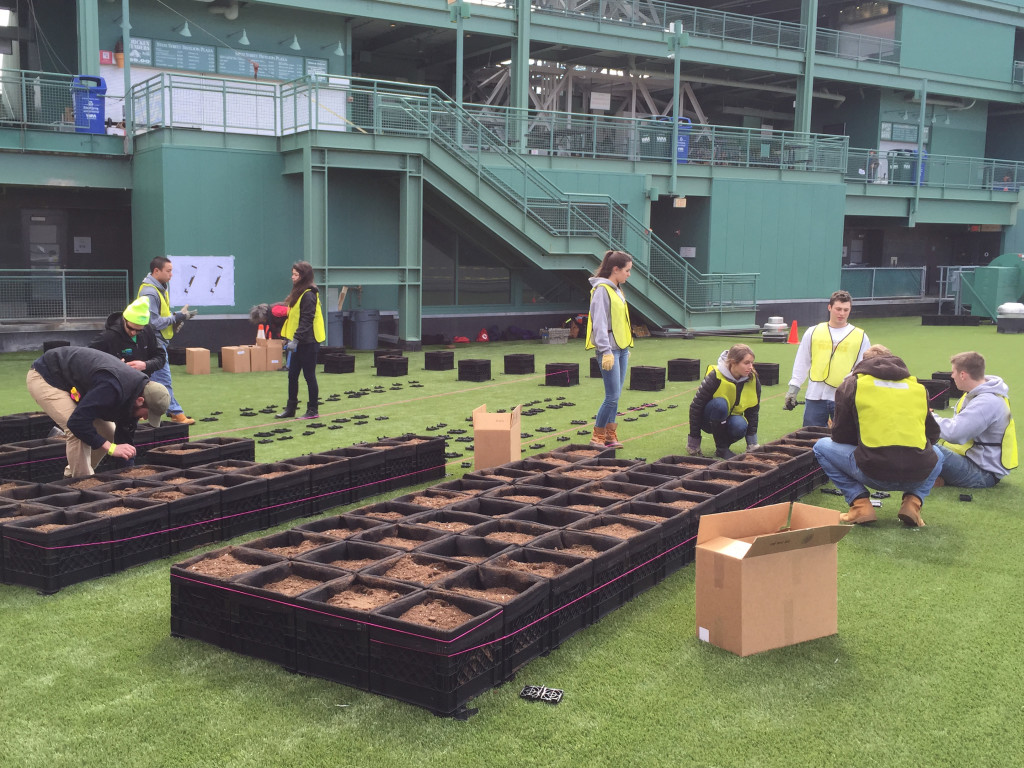major league crops

Fenway Farms, atop Fenway Park’s Front Office || photo by Dr. Richard Mandel
The Kansas City Royals may have won this year’s World Series, but the Boston Red Sox were the real 2015 winners. While this American League team’s game may not have been up to snuff, it’s historic stadium knocked one out of the park in April when Fenway Park representatives announced their plans to build a rooftop farm, the first in major league baseball. Later that month Fenway Farms materialized, with its first harvest in May. Now the weather is halting production for the year, which offers the facility’s designers and farmers time to reflect on the farm’s inaugural growing season.

Farm in October 2015 || photo by Dr. Richard Mandel
“All the stars aligned to make this project go forward, but it was ultimately Linda Henry, married to the owner of the Red Sox, who breathed life into it,” says Mark Winterer, the farm’s designer and co-owner of Recover Green Roofs, LLC in Somerville, MA. “One-year prior to Linda’s involvement, The Red Sox contacted Recover and was interested in a Sedum green roof. While we couldn’t find the financing to build the Sedum green roof, we were able to find the right [roof area that could support the load of a farm], so when Linda got involved, we were ready to go,” says Winterer. Fenway Farms is located atop the stadium’s Front Office, on the third base side at the EMC Club Level. It’s visible from both the EMC Club and State Street Pavilion Levels, but accessible to the public only during stadium tours. Stop & Shop, Dole, Sage Fruit and Aramark financed the project.
The approximately 4,000 pounds of vegetables and herbs grown at Fenway Farms annually make their way into dishes prepared in the stadium’s EMC Club kitchen. The stadium’s chefs, including Fenway Park executive chef Ron Abell, choose which crops will be grown each season from a master list, which are then planted in spring and summer by Green City Growers, an urban farming company that serves eastern Massachusetts.
“Cucumbers did really well,” says Green City Growers CEO and founder, Jessie Banhazl, “we harvested 600 pounds of cucumbers [during the 2015] season. Kale, lettuce, carrots, peppers, and eggplants also did well this year.” Banhazl was surprised by a unexpectedly vigorous strawberry crop, so much so that she’s amending next year’s crop plan to include more berries and fruit for Fenway Park’s pastry kitchen.
The farm system itself, designed and installed by Recover Green Roofs, consists of rows of modular plastic crate growing systems lined with filter fabric sleeves – called “Recover Aerated Media Modules“ (R.A.M.M.) – filled with 10-inches of Vermont Compost custom blended organic soil, with a Weathermatic Smartlink drip irrigation system. The planter design closely resembles that at Higher Ground Farm, atop the Boston Design Center, designed and built by Recover Green Roofs in 2013. “Fenway asked if we could do something similar to Higher Ground Farms,” says Winterer, “they liked the idea that it was a relatively inexpensive option, and that they could remove it if need be.”
What changes did the Fenway design include as a result of what Recover Green Roofs learned from the earlier project? “We learned to buy prefabricated fabric liners because Higher Ground Farms found it difficult to hand make those liners using filter fabric,” recounts Winterer, “we also used individual drip emitters [within each] milk crate instead of using your typical drip line with emitters spaced 12-inches on center.”

“Beta R.A.M.M.” at Higher Ground Farm || photo by Lauren Mandel
One of the most unique qualities shared by both projects is their use of potting soil instead of the modified, lightweight green roof media that’s typically deployed in rooftop farms. Winterer explains that, “the big take-away from Higher Ground Farm is that the milk crate allowed them to use potting soil up on a roof without worrying about it blowing away. Vegetable plants are much happier in potting soil than engineered growing media.” While the plants may be happy, modified green roof media is generally preferred for rooftop farms because it remains structurally stable (without breaking down or compacting) while maintaining its drainage capacity. By contrast, potting soil decomposes, compacts, and can easily clog filter fabrics within a single season. These properties suggest that soil replacement may be a necessary component of the Fenway Farms maintenance plan, which may be worth the hassle given the plants’ high productivity in this optimal soil environment.
What changes would the chefs like to see next year? Fewer radishes! “Radishes also did really well, which the kitchen was not happy about,” says Banhazl, jokingly, “we’ll have to pair back on how many we plant this year, they were rolling their eyes at us by the end of the spring every time we walked in with more radishes.”
 EAT UP
EAT UP